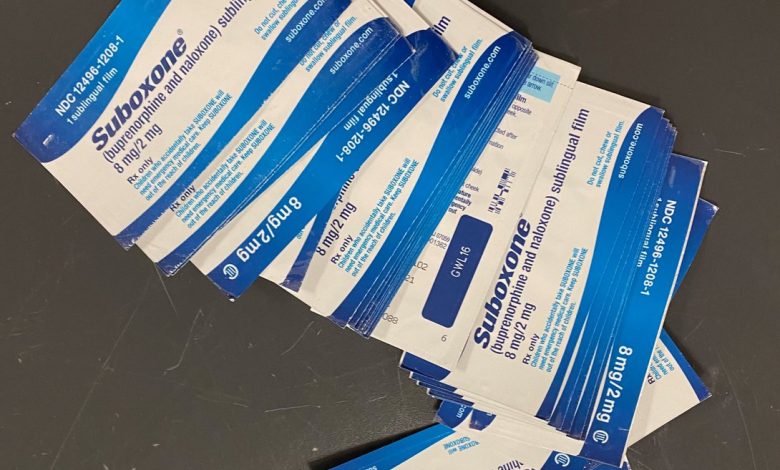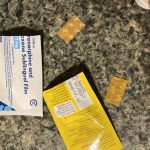How Long Does Suboxone Stay In Your System?

Suboxone is a prescription medication used for the treatment of opioid dependence. It is a combination medication that contains two active ingredients: buprenorphine and naloxone.
The history of Suboxone dates back to the late 1990s when buprenorphine was first approved for the treatment of opioid addiction in France. Buprenorphine is a partial opioid agonist, which means it activates the opioid receptors in the brain but to a lesser extent compared to full agonists like heroin or oxycodone. This property helps reduce withdrawal symptoms and cravings associated with opioid addiction while producing a milder euphoric effect.
In the United States, the Food and Drug Administration (FDA) approved Suboxone for the treatment of opioid dependence in October 2002. The approval of Suboxone was a significant development in the field of addiction medicine because it allowed qualified physicians to prescribe the medication in an office-based setting, known as office-based opioid treatment (OBOT). This was in contrast to methadone, which was only available through highly regulated opioid treatment programs (OTPs).
Suboxone’s formulation includes naloxone, which is an opioid antagonist that blocks the effects of opioids. The addition of naloxone serves as a deterrent to misuse of the medication. When Suboxone is taken as prescribed and dissolved under the tongue, buprenorphine is absorbed into the bloodstream, while naloxone has minimal effect. However, if Suboxone is crushed and injected, the naloxone becomes active and can precipitate withdrawal symptoms in opioid-dependent individuals.
The availability of Suboxone has expanded access to treatment for opioid dependence, allowing more individuals to receive care in outpatient settings. It has been widely used as a part of medication-assisted treatment (MAT) programs, which combine medication, such as Suboxone, with counseling and behavioral therapies to address the complex nature of opioid addiction.
Since its approval, Suboxone has become one of the most commonly prescribed medications for opioid dependence. It has been shown to be effective in reducing illicit opioid use, preventing overdose, and improving retention in treatment. However, it is important to note that Suboxone should be used as part of a comprehensive treatment plan and under the supervision of a qualified healthcare provider.
How to take Suboxone
Suboxone is typically taken sublingually, which means it is placed under the tongue and allowed to dissolve. Here are the general instructions for taking Suboxone:
1. Obtain a prescription: Suboxone is a prescription medication, so you will need to consult a healthcare provider who is authorized to prescribe it, such as a physician or addiction specialist.
2. Follow the prescribed dosage: Your healthcare provider will determine the appropriate dosage of Suboxone for your specific needs. It is crucial to follow their instructions carefully and not exceed the prescribed dose. The dosing ranges typically used for Suboxone:
Induction phase: When starting Suboxone treatment, an induction phase is usually initiated. The initial dose is often based on the severity of opioid dependence and the time since the last opioid use. A common starting dose is 2 mg/0.5 mg or 4 mg/1 mg (buprenorphine/naloxone), which is taken sublingually.
Stabilization phase: Once the induction phase is complete, the dosage is adjusted as needed to achieve stabilization. The typical maintenance dose of Suboxone ranges from 4 mg/1 mg to 24 mg/6 mg per day, although some individuals may require higher doses.
Maintenance phase: Once stabilized on an appropriate dose, individuals can remain on maintenance treatment for an extended period. The duration of maintenance can vary depending on individual circumstances, but it can last for months or even years.
3. Prepare to take Suboxone: Wash your hands thoroughly to maintain hygiene. Suboxone comes in the form of sublingual tablets or film strips. If you are using tablets, ensure that your mouth is moist before taking the medication to aid in dissolution.
4. Place Suboxone under the tongue: Gently place the Suboxone tablet or film strip under your tongue, allowing it to rest there. Do not chew or swallow it.
5. Allow Suboxone to dissolve: Let the Suboxone dissolve completely under your tongue without swallowing. This process may take several minutes. Avoid talking or moving your tongue excessively to prevent dislodging the medication.
6. Avoid eating or drinking: Refrain from eating, drinking, or smoking until the Suboxone has fully dissolved. These activities can interfere with the absorption of the medication.
7. Dispose of the residue: After the Suboxone has dissolved, you can swallow any remaining saliva in your mouth, including the residue. It is important not to spit out the residue, as it contains the remaining medication.
8. Follow your healthcare provider’s instructions: Your healthcare provider will provide specific guidelines regarding how often to take Suboxone and any other instructions related to your treatment plan. It is crucial to follow these instructions precisely to achieve the best results.
Remember, Suboxone should be used as part of a comprehensive treatment plan for opioid dependence, which may include counseling, behavioral therapies, and regular check-ins with your healthcare provider. It is essential to consult with a healthcare professional for personalized guidance and supervision throughout your treatment with Suboxone.
How Long Does Suboxone Stay In Your System?
If you or a loved one are considering Suboxone treatment or have recently started it, you might be curious about how long the medication stays in the body. Understanding the duration Suboxone remains in your system can be essential for managing your treatment effectively and making informed decisions. In this section, we will explore the factors that influence the elimination of Suboxone and provide an overview of its approximate duration in the body.
Factors Affecting Suboxone Elimination
1. Half-life: The elimination half-life of buprenorphine, the primary active ingredient in Suboxone, is an important factor in determining how long the medication stays in your system. The half-life is the time it takes for the concentration of a drug in the body to decrease by half. Buprenorphine has a long half-life ranging from 24 to 60 hours, meaning it can remain in the body for an extended period. Naloxone has a mean elimination half-life ranging from 2 to 12 hours.
2. Metabolism and Individual Variations: Metabolism plays a crucial role in the elimination of Suboxone. The rate at which your body breaks down and processes the medication can vary among individuals. Factors such as age, liver function, overall health, and genetics can influence the metabolism of Suboxone. Additionally, concurrent use of certain medications or substances may affect how Suboxone is metabolized.
3. Dosage and Treatment Duration: The dosage and duration of Suboxone treatment can impact how long it stays in your system. Higher doses of Suboxone may take longer to eliminate compared to lower doses. Similarly, long-term use of Suboxone can result in the accumulation of the medication in your body, potentially extending its duration of action.
Approximate Duration of Suboxone in the Body
While it is challenging to determine an exact duration for Suboxone to completely leave the system, the following timeline provides a general understanding:
1. Detection in Urine: Suboxone can typically be detected in urine for approximately 2-3 days after the last dose.
2. Detection in Blood: Suboxone can be detected in blood for up to 24-72 hours after the last dose.
3. Detection in Saliva: Suboxone can be detected in saliva for approximately 1-4 days after the last dose.
4. Detection in Hair: Suboxone may be detected in hair follicles for an extended period, up to 90 days or more. However, it’s important to note that hair testing is less common and typically reserved for specialized circumstances.
It is important to remember that these estimates are approximate and can vary depending on individual factors and the specific testing methods employed.
Conclusion
Understanding the duration of Suboxone in your system can provide valuable insights into its effects and potential interactions with other medications or substances. However, it is crucial to consult with a healthcare professional who can offer personalized guidance based on your specific circumstances. They can provide detailed information regarding Suboxone elimination and advise you on the safe and effective use of the medication.
Always follow your healthcare provider’s instructions regarding Suboxone treatment, dosage adjustments, and any concerns you may have. Open communication with your healthcare team will ensure that you receive the best possible care throughout your recovery journey.





